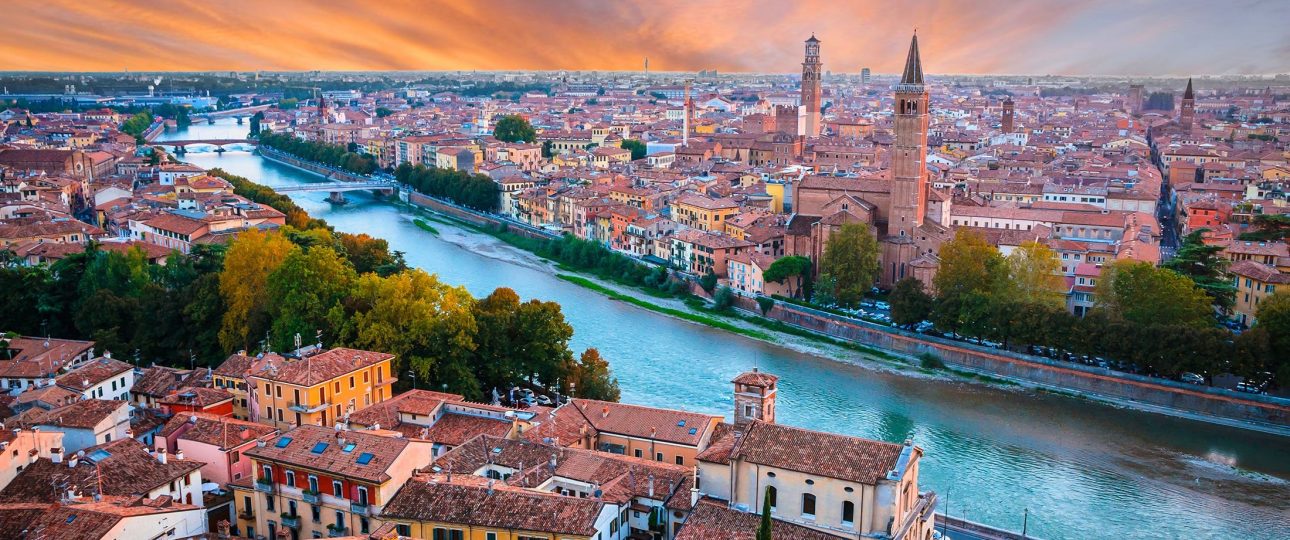Verona, Italy – A Travel Guide
Historical Significance
Verona, a city with over 2,000 years of history, was a significant center during the Roman Empire. The city is renowned for its well-preserved Roman amphitheater, the Arena di Verona, which still hosts opera performances. The cityscape is a blend of Roman ruins and medieval architecture, shaped by the rebuilding efforts following the earthquake of 1117 AD. This blend showcases the transition from late medieval to early Renaissance styles, with notable contributions from the Scaligeri family, who ruled from the 12th to 14th century.
Unique Attractions
Verona offers a range of attractions that reflect its rich history and cultural heritage. Juliet’s House, linked to Shakespeare’s “Romeo and Juliet,” draws visitors who leave love notes on its walls. The Piazza delle Erbe, a lively square, features vibrant markets and Renaissance architecture. Castelvecchio, a medieval castle, provides stunning views of the city and insight into Verona’s military past. The city’s churches, such as St. Zeno and Sant’Anastasia, along with the cathedral, are architectural highlights.
Exploring Verona’s Cuisine
Verona’s culinary scene is a delight for food enthusiasts. The local specialty, “Risotto all’Amarone,” is a creamy rice dish cooked with Amarone wine, offering a taste unique to the region. Pair it with Valpolicella wine from nearby vineyards for an authentic experience. Don’t miss the chance to try Veronese pastries like “Pandoro” and “Fugassa,” which are local favorites.
Best Time to Visit
Spring and autumn are ideal for visiting Verona, with mild weather and fewer crowds. Spring brings blooming flowers, while autumn offers beautiful foliage and a cozy atmosphere. Summers can be hot, so if you prefer cooler weather, plan your visit accordingly.
Getting to Verona
Verona is accessible by air, train, or car. Verona Villafranca Airport, also known as Aeroporto Valerio Catullo, is 12 km from the city and serves budget flights from various European cities. The VeronaAirLink (Line 199) bus connects the airport to Verona Porta Nuova train station. For train travelers, Verona Porta Nuova is a major hub with connections to Milan, Venice, and beyond. If driving, Verona is well-connected by highways, making it accessible from different parts of Italy.
Local Transportation
Verona’s compact size makes it easy to explore on foot. The city center is pedestrian-friendly, with most attractions within walking distance. The local bus network is efficient, with tickets available at tobacco shops, vending machines, or via the “ticket bus Verona” app. Taxis are also available and can be hailed on the street or found at designated stands.
- Verona has a history spanning over 2,000 years.
- The Arena di Verona is a Roman amphitheater still used for opera performances.
- Juliet’s House is a popular attraction linked to Shakespeare’s “Romeo and Juliet.”
- Piazza delle Erbe is a lively square with markets and Renaissance architecture.
- Castelvecchio offers views and insights into Verona’s military history.
- “Risotto all’Amarone” is a local specialty dish.
- Valpolicella wine is produced in nearby vineyards.
- Spring and autumn are the best times to visit Verona.
- Verona Villafranca Airport is the main airport serving the city.
- Verona has an efficient bus network and taxis for local transportation.



